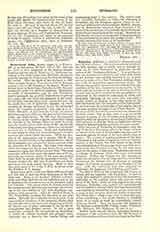

Eustochium Julia, Saint, virgin, b. at Rome c. 368; d. at Bethlehem, September 28, 419 or 420. She was the third of four daughters of the Roman Senator Toxotius and his wife Saint Paula (q.v.), the former belonging to the noble Julian race, the latter tracing her ancestry through the Scipios and the Gracchi (Jerome, Ep. cxviii). After the death of her husband (c. 380) Paula and her daughter Eustochium lived in Rome as austere a life as the Fathers of the desert. When St. Jerome came to Rome from Palestine in 382, they put themselves under his spiritual guidance. Hymettius, an uncle of Eustochium, and his wife Praetextata tried to persuade the youthful Eustochium to give up her austere life and enjoy the pleasures of the world, but all their attempts were futile. About the year 384 she made the vow of perpetual virginity, on which occasion St. Jerome addressed to her his celebrated letter “De custodiae virginitatis” (Ep. xxii in P.L., XXII, 394-425). A year later St. Jerome returned to Palestine and soon after was followed to the Orient by Paula and Eustochium. In 386 they accompanied St. Jerome on his journey to Egypt, where they visited the hermits of the Nitrian Desert in order to study and afterwards imitate their mode of life. In the fall of the same year they returned to Palestine and settled permanently at Bethlehem. Paula and Eustochium at once began to erect four monasteries and a hospice near the spot where Christ was born. While the erection of the monasteries was in process (386-9) they lived in a small building in the neighborhood. One of the monasteries was occupied by monks and put under the direction of St. Jerome. The three other monasteries were taken by Paula and Eustochium and the numerous virgins that flocked around them. The three nunneries, which were under the supervision of Paula, had only one oratory, where all the nuns met several times daily for prayer and the chanting of psalms. St. Jerome testifies (Ep. 308) that Eustochium and Paula performed the most menial services. Much of their time they spent in the study of Holy Scripture under the direction of St. Jerome.
Eustochium spoke Latin and Greek with equal ease and was able to read the Holy Scriptures in the Hebrew text. Many of St. Jerome’s Biblical commentaries owe their existence to her influence and to her he dedicated his commentaries on the prophets Isaias and Ezechiel. The letters which St. Jerome wrote for her instruction and spiritual advancement are, according to his own testimony (De viris illustribus, cap. cxxxv), very numerous. After the death of Paula in 404, Eustochium assumed the direction of the nunneries. Her task was a difficult one on account of the impoverished condition of the temporal affairs which was brought about by the lavish almsgiving of Paula. St. Jerome was of great assistance to her by his encouragement and prudent advice. In 417 a great misfortune overtook the monasteries at Bethlehem. A crowd of ruffians attacked and pillaged them, destroyed one of them by fire, besides killing and maltreating some of the inmates. The wicked deed was probably instigated by John, the Patriarch of Jerusalem, and the Pelagians against whom St. Jerome had written some sharp polemics. Both St. Jerome and St. Eustochium informed Pope Innocent I by letter of the occurrence, who severely reproved the patriarch for having permitted the outrage. Eustochium died shortly after and was succeeded in the supervision of the nunneries by her niece, the younger Paula. The Church celebrates her feast on September 28.
MICHAEL OTT


